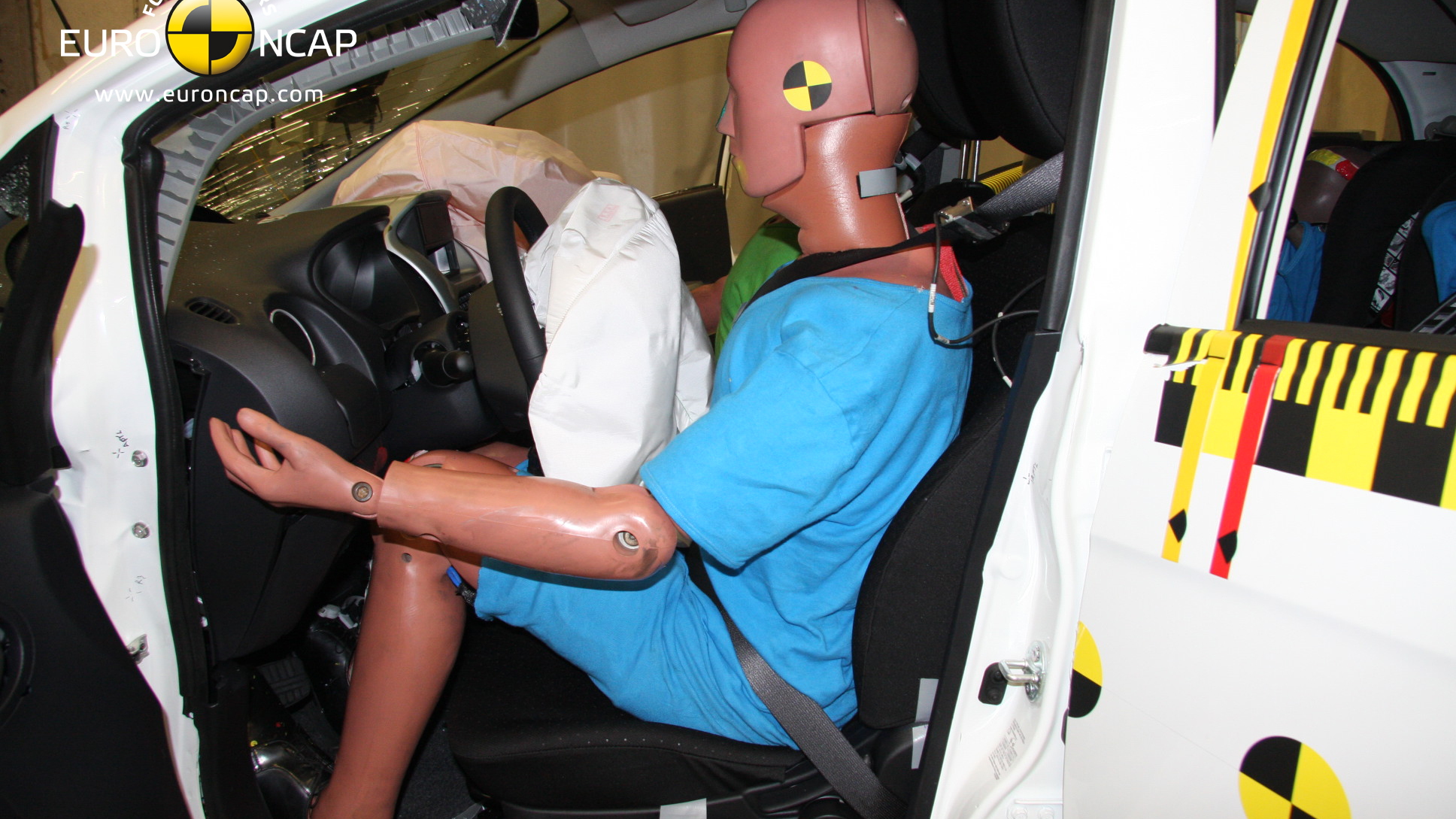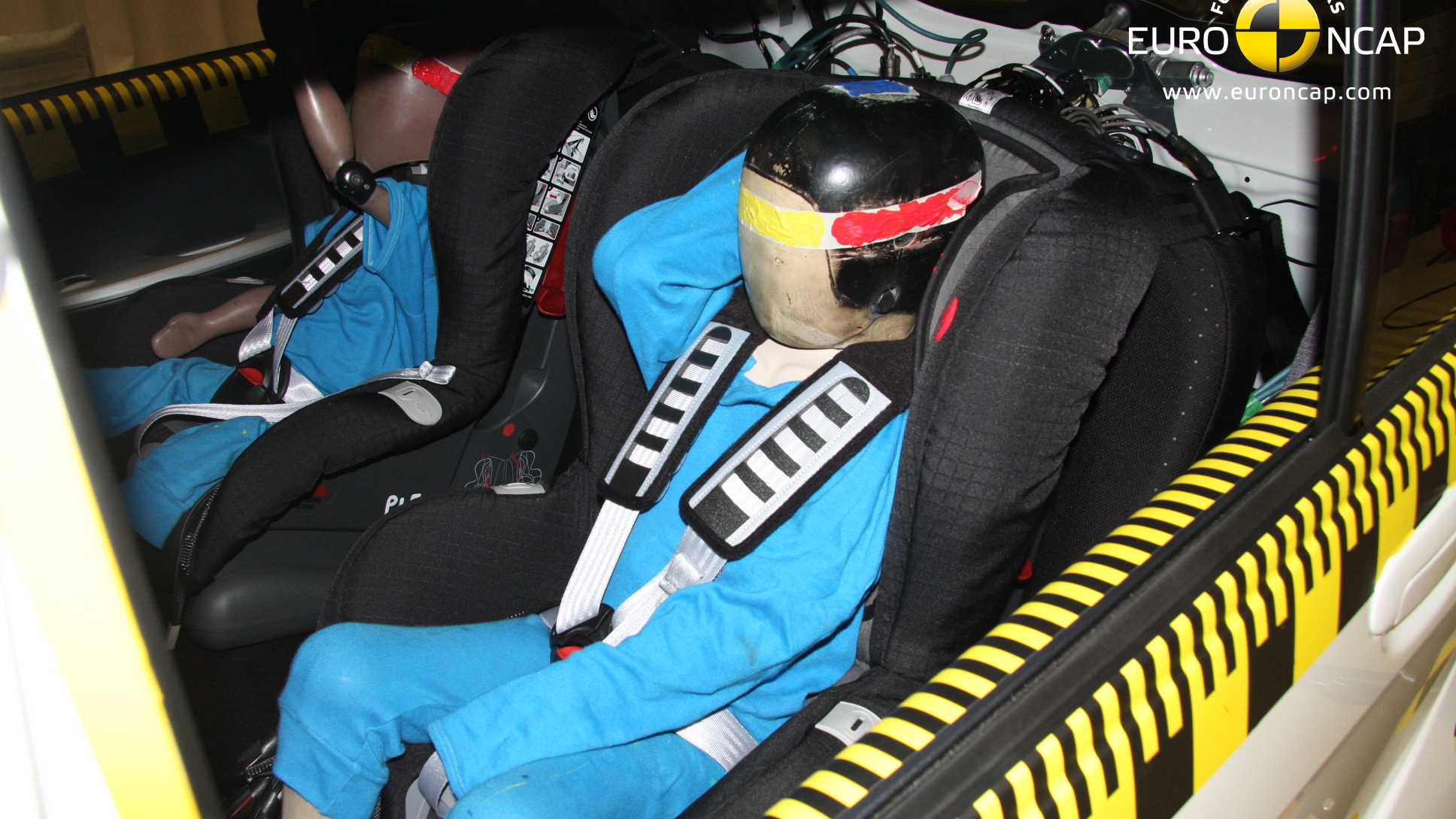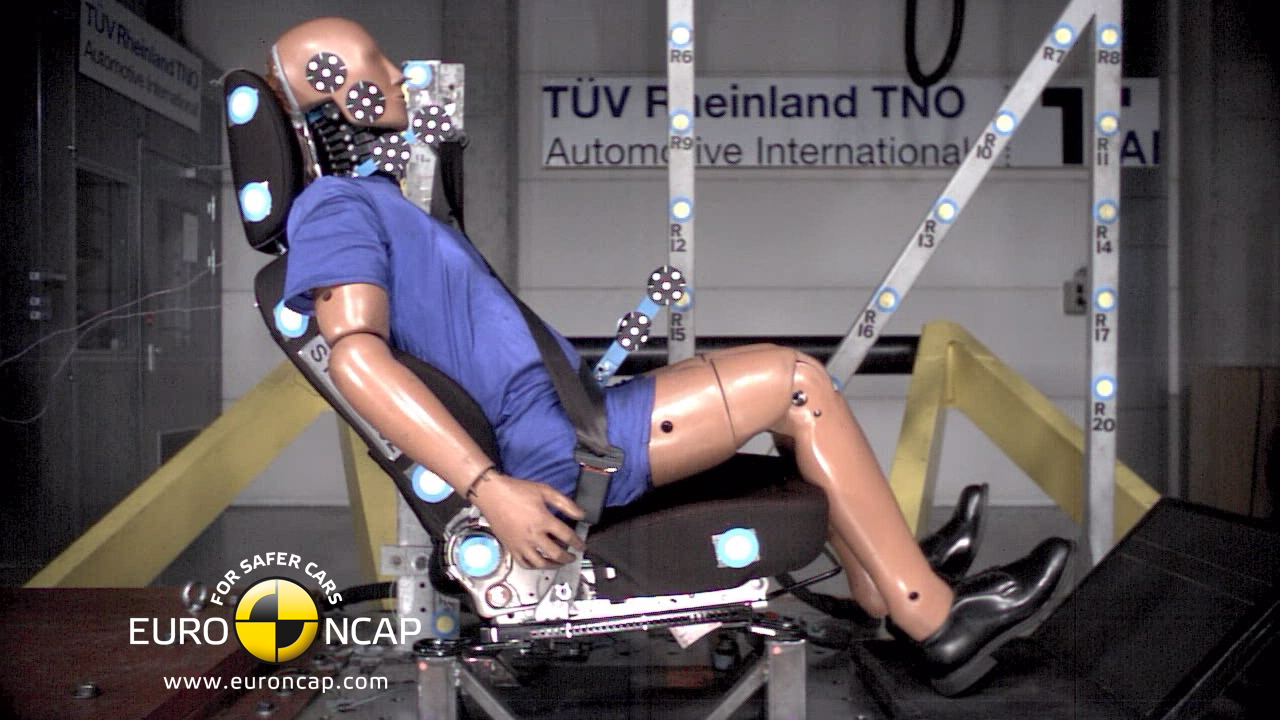It may be getting a complete redesign for the U.S. market, but the european version of Mitsubishi’s i electric car has obtained 4 out of a possible 5 stars in the european-wide car safety tests.
In results announced yesterday by the European New Car Assessment Programme (NCAP) the sub-compact four seat electric car known as the Mitsubishi i-Miev, Citroen C-Zero and Peugeot iOn in Europe performed well in some areas but not in others, missing out on the coveted 5 star rating.
Running the full gamut of tests which test everything from frontal impact and car to car side impact through to whiplash protection, child protection and speed limitation devices the i-Miev was shown to be in need of improvement in several areas to passengers and pedestrians.
Maximum Points for Child Passenger Safety...
From the results, obtainable at the Euro NCAP website, the Mitsubishi i-Miev was awarded maximum points for its protection of a 3 year old child in appropriate child seat in the rear of the vehicle.
In addition, the tests concluded that the car’s front airbag system could easily be turned off to allow for a rear-facing child seat to be used in the front passenger seat, but commented that driver feedback for the front passenger airbag was not clear enough.
...but Less so for Adults
For adults however, the i-Miev didn’t get as much respect from the testers. The report notes that “Inspection of the i-MiEV after the frontal impact showed that several structures had reached the limit of their load- bearing capacity. The passenger compartment was judged to be unstable as the vehicle might not be able to withstand an impact at a higher speed. As a consequence, the score for the driver's chest was penalised and protection of this body region was rated as marginal.”
Protection against whiplash injury, one of the most common injuries in crashes worldwide, received top ratings.
Predictably, the lack of much structure ahead of the passenger cell caused significant deformation of the driver’s footwell too, increasing the risk of leg and foot injury in the event of a front-end impact. Testers criticized the i-Miev’s dash, noting that “Structures in the dashboard posed a risk of injury to the knees and femurs of both the driver and passenger”.
Hit a Car, not a Pole
Continuing the discussion of adult occupant safety, NCAP officials detail the peanalizing of the i-Miev in a side impact barrier test after a side door opened on impact. However, even with this peanalization, the i-Miev still scored 4 to 5 stars for its protection of various parts of the human body.
Things changed when the i-Miev was put through a more severe side-pole test. A lack of side-airbags and minimal side-impact protection resulted in the test dummy registering rib compression, resulting in a 1 star rating for that part of the test.
Safe or Not?
Euro NCAP test results are categorized by the weight of the vehicle, rather than the size. As such, the i-Miev is compared in the NCAP database with cars such as the 2011 Honda CR-Z, 2011 Nissan Juke and 2009 Honda Fit, all of which scored 5 out of 5.
Compared to 20 other cars listed in the same weight class, the i-Miev rates better for safety than 2 other vehicles, the same as 3 others, and worse than the remaining cars listed. In other words, it performs less well than most other cars in its class, but we should point out the extra weight of the batteries may have placed it in an unfair weight class for its size.
A important point to note however, is the safety of the electrical systems present in the car. In all tests, the electrical disconnects worked and no high-voltage components posed a threat to occupants or bystanders.
Could Do Better?
We have to admit we’re not surprised by these tests. After all, improving safety is the main reason behind the 2012 U.S. spec i’s redesign. Of course, Mitsubishi tells us that the U.S. spec 2012 Mitsubishi i has additional (unspecified) crash protection in the form of better crash structures and modifications to the original Japanese design.
Let’s these modifications to the longer, wider i help, making the i safer than its european cousin.
[Euro NCAP]















